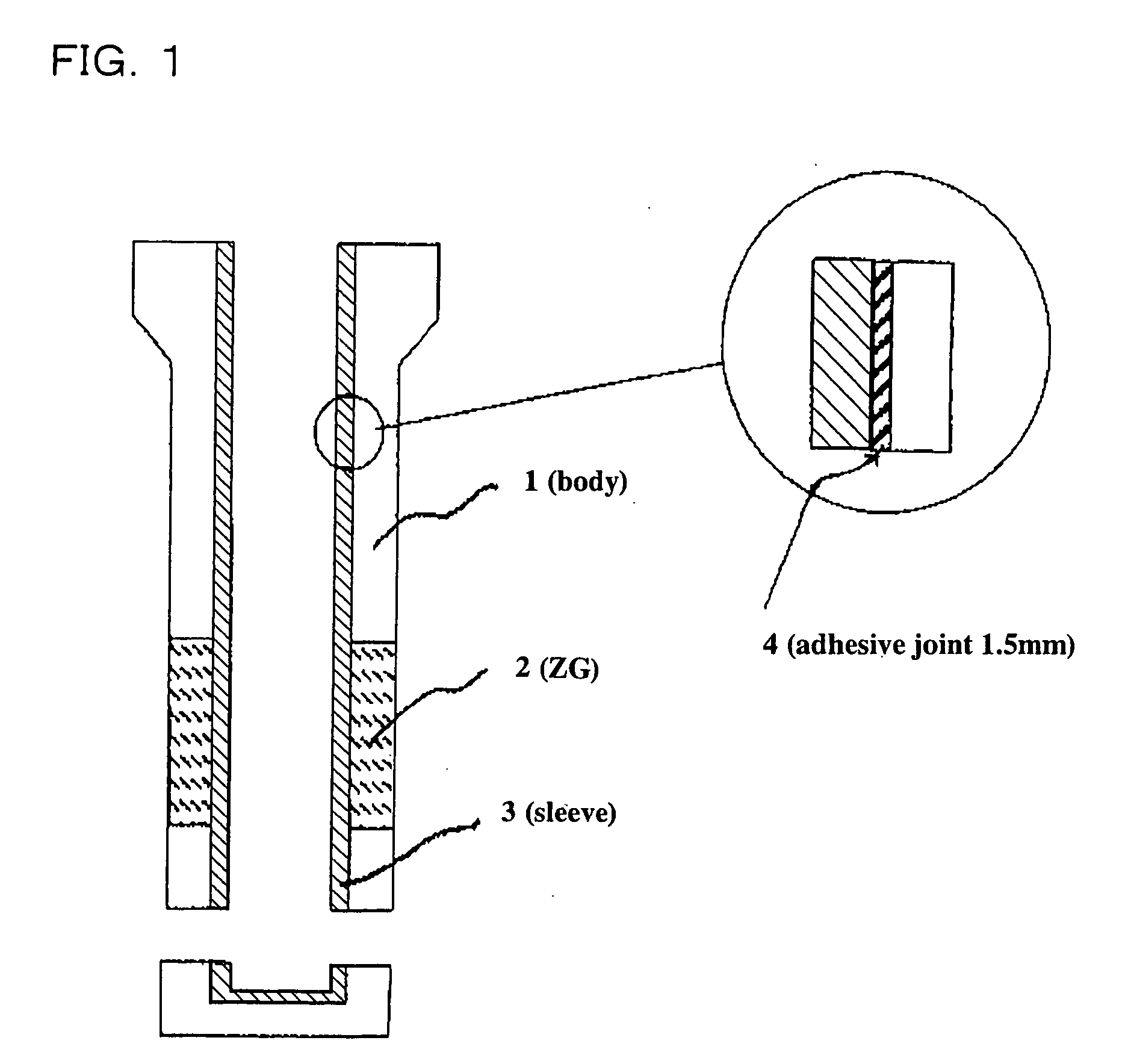Binding structure of refractory sleeve for inner hole of nozzle for continuous casting
- Summary
- Abstract
- Description
- Claims
- Application Information
AI Technical Summary
Benefits of technology
Problems solved by technology
Method used
Image
Examples
Embodiment Construction
[0022] In an immersion nozzle illustrated in FIG. 1, the reference numerals 1, 2, 3 and 4 indicates a nozzle body, a ZG composition used on a slag line, a sleeve, and an adhesive joint, respectively.
[0023] A to F in the following Table 1 indicates examples of a composition for use in each portion of the immersion nozzle.
TABLE 1Type of CompositionABCDEFCompoundingC252520—25—RatioAl2O375—————(mass %)MgO—75——3540ZrO2——6070——CaO——20304060
[0024]
TABLE 2ComparativeExampleInventive Example11234567Material of BodyAAAAAAAAMaterial of SleeveCCCCCCCCPorosity of Joint1015203045607590SpallingCracks inX◯◯◯◯◯◯◯TestBodyDetachment◯◯◯◯◯◯◯◯of sleeveComparativeComparativeExampleInventive ExampleExample238910111213144Material of BodyAAAAAAAAAAMaterial of SleeveCDDDDDDDDDPorosity of Joint95101520304560759095SpallingCracks in◯XΔ◯◯◯◯◯◯◯TestBodyDetachmentX◯◯◯◯◯◯◯◯Xof sleeve
In the test result,
◯: no defect,
Δ: occurrence of minor defect,
X: occurrence of serious defect
[0025]
TABLE 3ComparativeExampleInvent...
PUM
| Property | Measurement | Unit |
|---|---|---|
| Fraction | aaaaa | aaaaa |
| Percent by mass | aaaaa | aaaaa |
| Percent by mass | aaaaa | aaaaa |
Abstract
Description
Claims
Application Information
 Login to view more
Login to view more - R&D Engineer
- R&D Manager
- IP Professional
- Industry Leading Data Capabilities
- Powerful AI technology
- Patent DNA Extraction
Browse by: Latest US Patents, China's latest patents, Technical Efficacy Thesaurus, Application Domain, Technology Topic.
© 2024 PatSnap. All rights reserved.Legal|Privacy policy|Modern Slavery Act Transparency Statement|Sitemap


